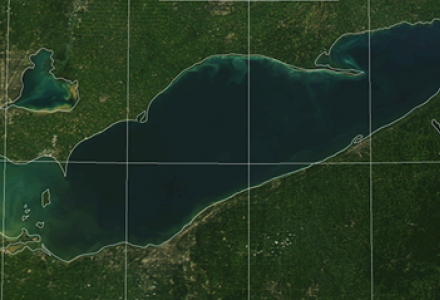
Robust land conservation involves an ongoing focus on protecting and restoring properties. Success is measured not only in terms of projects completed but in making a meaningful difference in the community for people and the environment. For 25 years, Black Swamp Conservancy has worked to protect Ohio’s natural heritage and ensure that it is preserved for future generations.
Formed in 1993 by citizens concerned with the rate of rural land development, the organization has protected more than 17,000 acres of land across northwest Ohio. Most of the work throughout our history has been protecting land through conservation easements with private landowners. These agreements permanently protect lands like natural areas and family farms from development. The conservancy also has used these agreements to create public parks, increasing public access to natural areas. This work has resulted in the protection of some of northwest Ohio’s best kept secrets and scenic landscapes.

In the past decade, harmful algal blooms have come to define the Western Lake Erie basin. With this ongoing threat to our region’s water quality, the conservancy has placed a new focus on projects that incorporate strategies to improve water quality. This resulted in the organization’s first foray into large-scale restoration. Using funds from the US Great Lakes Restoration Initiative, Ohio Environmental Protection Agency, US National Fish and Wildlife Foundation, and the Clean Ohio Green Space Conservation Program, more than 60 acres of wetlands and natural stream corridor and 80 acres of upland buffer habitat have been restored at our Forrest Woods Nature Preserve near Cecil, Ohio. This project is located at the confluence of Marie DeLarme Creek and the Maumee State Scenic River, which means the restored wetlands are treating all the water from the Marie DeLarme Creek watershed before it enters the Maumee, the largest tributary to Lake Erie.

(See also: “Integration is the Solution: Ontario’s Integrated Watershed-based Approach for Managing Natural Resources”)
With the success of the Forrest Woods project, the conservancy is planning several new restoration projects, including the next phase of our Forrest Woods project to restore more than 4,000 feet of floodplain along the Maumee River. Additionally, we are working with the Sandusky County Park District to restore two sites along the Sandusky River that bookend the city of Fremont. This will create two new public parks with fishing and paddling access, improve water quality and provide spawning and nursery habitat for important sport fish, including walleye and white bass. We also have formed a partnership with the Wood County Park District to restore a 10-acre, edge-of-field wetland, as well as 10 acres of associated upland, at the district’s Carter Historic Farm. This project will be used to demonstrate how wetland restoration and agriculture can coexist on the same property to improve water quality without impacting farm viability.
These projects demonstrate our commitment to protecting the region’s natural and agricultural heritage, which has led the conservancy to launch a new farm access program. This program will assist aspiring farmers hoping to create sustainable farms that market their products locally, by helping them overcome the most common barrier to entering the agricultural world: the high cost of land. To accomplish this, the conservancy will purchase farms, restore marginal areas, lease the land to beginning farmers, and work with tenant farmers to establish agricultural best management practices to protect water quality, improve soil health and reduce erosion. This program will help to protect Ohio’s agricultural heritage, improve environmental quality and bolster local economies.

These are but a few of the ways that Black Swamp Conservancy is working in northwest Ohio to improve our communities. This work would not be possible without the support of generous donors, volunteers and landowners. If you are interested in finding out more, contact us at (419) 833-1025 or bsc@blackswamp.org. Learn more at BlackSwamp.org.

Chris Collier is the conservation manager at Black Swamp Conservancy, headquartered in Pemberville, Ohio.



